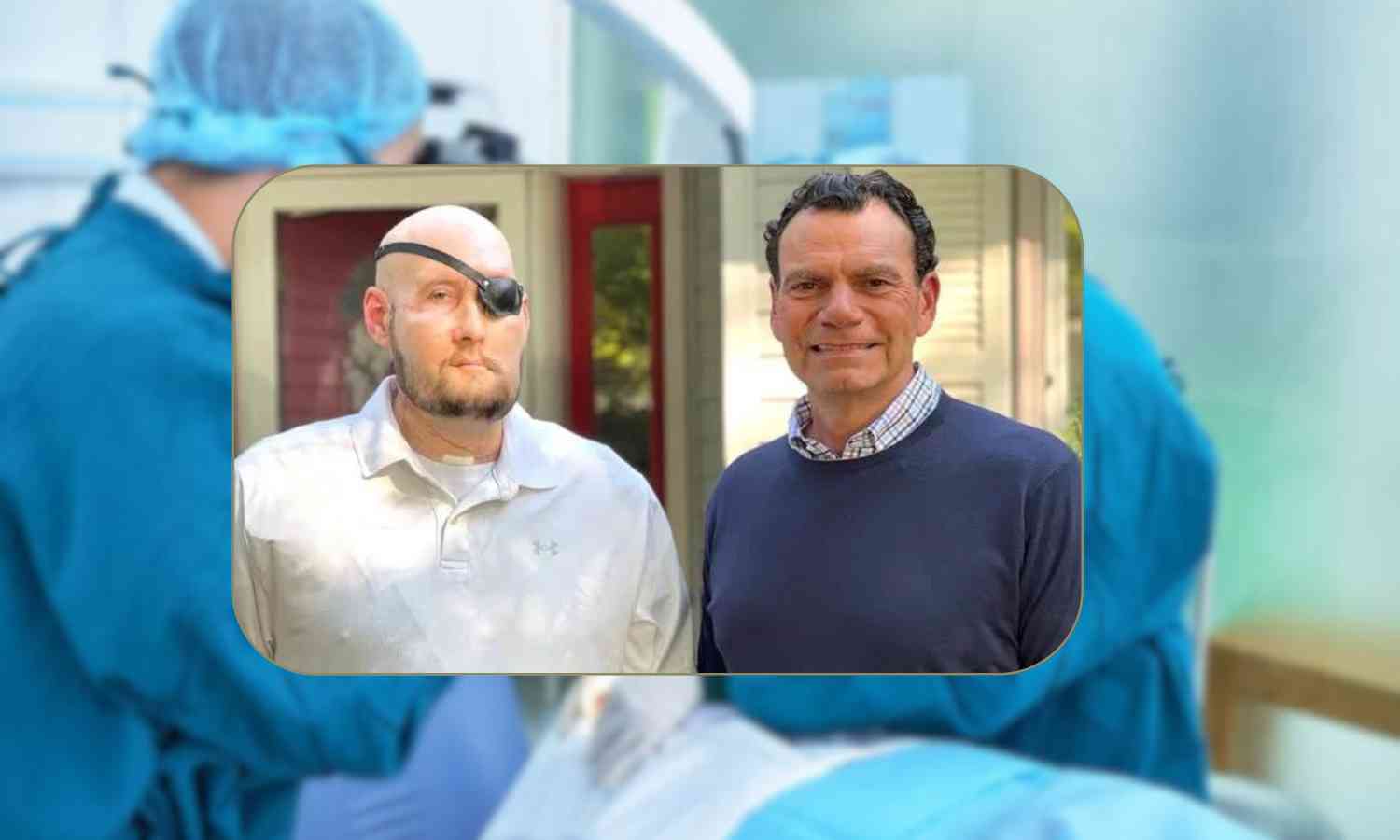In what is referred to as a medical first, a group of surgeons in New York said on Thursday that they had successfully completed the first-ever whole eye transplant. It is unclear, yet, if the patient will truly be able to see again.
The innovative procedure comprised transplanting the donor's entire left eye and a portion of his face onto the 46-year-old line worker recipient, who had escaped a 7,200-volt electric shock in June 2021 after his face touched a live wire.
The 46-year-old Aaron James had severe injuries that included losing his dominant left arm above the elbow, his entire nose and lips, his front teeth, his left face, and his chin down to the bone.
"The mere fact that we've accomplished the first successful whole-eye transplant with a face is a tremendous feat many have long thought was not possible," said Eduardo Rodriguez, who oversaw the 21-hour procedure using 3D cutting guidelines tailored to each patient.
"We couldn't have asked for a more perfect patient," he stated further.
He was referred to one of the leading medical centres for facial restoration, NYU Langone Health, which performed the surgery on May 27.
Long considered the optimum medical goal, whole eye transplantation was never carried out on a living individual before, despite some success in mice where doctors were able to restore partial eyesight.
The NYU Langone team reported using adult stem cells generated from bone marrow to facilitate the repair of nerves.
"We're making great progress in the treatments to promote optic nerve regeneration that could accompany eye transplant," Jeffrey Golberg, who is in charge of similar projects at Stanford University's Byers Eye Institute, told AFP
"These adjunctive therapies will allow the donor eye to significantly connect to the brain and restore meaningful visual function to blind patients everywhere."
James may not recover his sight, even if the transplanted left eye showed healthy symptoms, such as direct blood flow to the retina, which is in charge of receiving light and transmitting images to the brain.
"I'm grateful beyond words for the donor and his family, who have given me a second chance at life during their own time of great difficulty. I hope the family finds solace in knowing that part of the donor lives on with me," said James, who, in September, went back to his native Arkansas to be with his wife and kids.
(Photo: CNN/NYU Langone Health)
© Copyright 2023. All Rights Reserved Powered by Vygr Media.






















